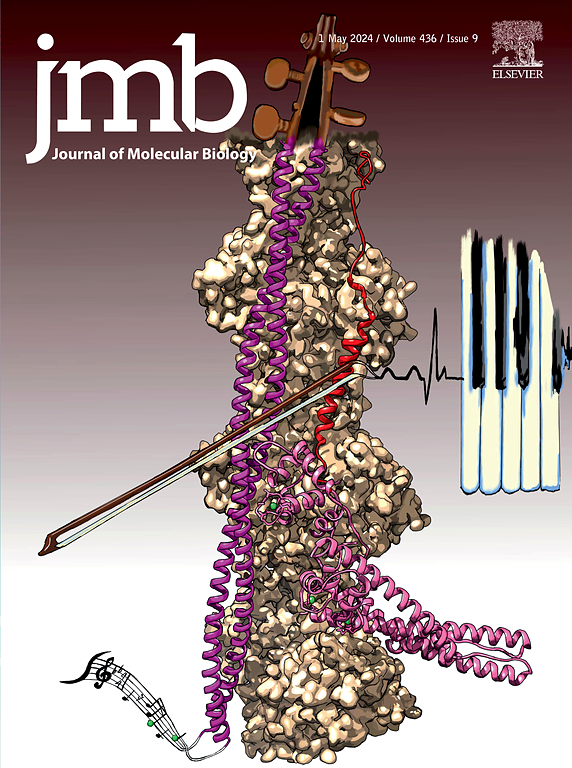Phosphomimetic Experiments Do Not Support a Causal Role for TFAM Phosphorylation in mtDNA Elimination in Sperm
IF 4.5
2区 生物学
Q1 BIOCHEMISTRY & MOLECULAR BIOLOGY
引用次数: 0
Abstract
In sexually reproducing eukaryotes—particularly mammals—mitochondrial DNA (mtDNA) is typically inherited from a single parent, making uniparental mtDNA inheritance a fundamental feature of eukaryotic biology. Recently, it has been suggested that spermatozoa contain no mtDNA because the matrix targeting sequence (MTS) of the mitochondrial transcription factor A (TFAM) becomes phosphorylated, which prevents the mitochondrial import of this protein essential for mtDNA replication. In this study, we used a combination of the GeneSwap technique and phosphomimetic mutations to investigate the impact of TFAM MTS phosphorylation on mtDNA maintenance in cultured cells. TFAM variants carrying phosphomimetic substitutions—S31D, S34D (TFAM-DD), and the double mutants S31D, P32D/S34D, F35D (TFAM-4D)—supported mtDNA maintenance in 143B cells, with their MTSs at least partially processed. This occurred despite the overall negative charge of the MTS in the TFAM-4D variant. Moreover, blocking the MTS processing by a combination of an overall negative charge and a mutation in the arginine residue critical for MTS cleavage did not prevent mtDNA maintenance. These observations led us to conclude that TFAM MTS phosphorylation alone is unlikely to explain mtDNA loss in human sperm during maturation.

拟磷实验不支持TFAM磷酸化在精子mtDNA消除中的因果作用。
在有性生殖的真核生物中,尤其是哺乳动物,线粒体DNA (mtDNA)通常是从单亲遗传的,这使得单代mtDNA遗传成为真核生物的一个基本特征。最近,有人认为精子中不含有mtDNA是因为线粒体转录因子A (TFAM)的基质靶向序列(MTS)被磷酸化,这阻止了线粒体输入mtDNA复制所必需的蛋白质。在这项研究中,我们使用GeneSwap技术和拟磷突变相结合的方法来研究TFAM MTS磷酸化对培养细胞mtDNA维持的影响。携带拟磷取代的TFAM变体S31D、S34D (TFAM- dd)和双突变体S31D、P32D/S34D、F35D (TFAM- 4d)支持143B细胞的mtDNA维持,其MTSs至少部分被加工。尽管在TFAM-4D变异中MTS整体带负电荷,但仍发生了这种情况。此外,通过整体负电荷和对MTS切割至关重要的精氨酸残基突变的组合来阻断MTS加工并不能阻止mtDNA的维持。这些观察结果使我们得出结论,单独的TFAM MTS磷酸化不太可能解释人类精子成熟过程中mtDNA的丢失。
本文章由计算机程序翻译,如有差异,请以英文原文为准。
求助全文
约1分钟内获得全文
求助全文
来源期刊

Journal of Molecular Biology
生物-生化与分子生物学
CiteScore
11.30
自引率
1.80%
发文量
412
审稿时长
28 days
期刊介绍:
Journal of Molecular Biology (JMB) provides high quality, comprehensive and broad coverage in all areas of molecular biology. The journal publishes original scientific research papers that provide mechanistic and functional insights and report a significant advance to the field. The journal encourages the submission of multidisciplinary studies that use complementary experimental and computational approaches to address challenging biological questions.
Research areas include but are not limited to: Biomolecular interactions, signaling networks, systems biology; Cell cycle, cell growth, cell differentiation; Cell death, autophagy; Cell signaling and regulation; Chemical biology; Computational biology, in combination with experimental studies; DNA replication, repair, and recombination; Development, regenerative biology, mechanistic and functional studies of stem cells; Epigenetics, chromatin structure and function; Gene expression; Membrane processes, cell surface proteins and cell-cell interactions; Methodological advances, both experimental and theoretical, including databases; Microbiology, virology, and interactions with the host or environment; Microbiota mechanistic and functional studies; Nuclear organization; Post-translational modifications, proteomics; Processing and function of biologically important macromolecules and complexes; Molecular basis of disease; RNA processing, structure and functions of non-coding RNAs, transcription; Sorting, spatiotemporal organization, trafficking; Structural biology; Synthetic biology; Translation, protein folding, chaperones, protein degradation and quality control.
 求助内容:
求助内容: 应助结果提醒方式:
应助结果提醒方式:


